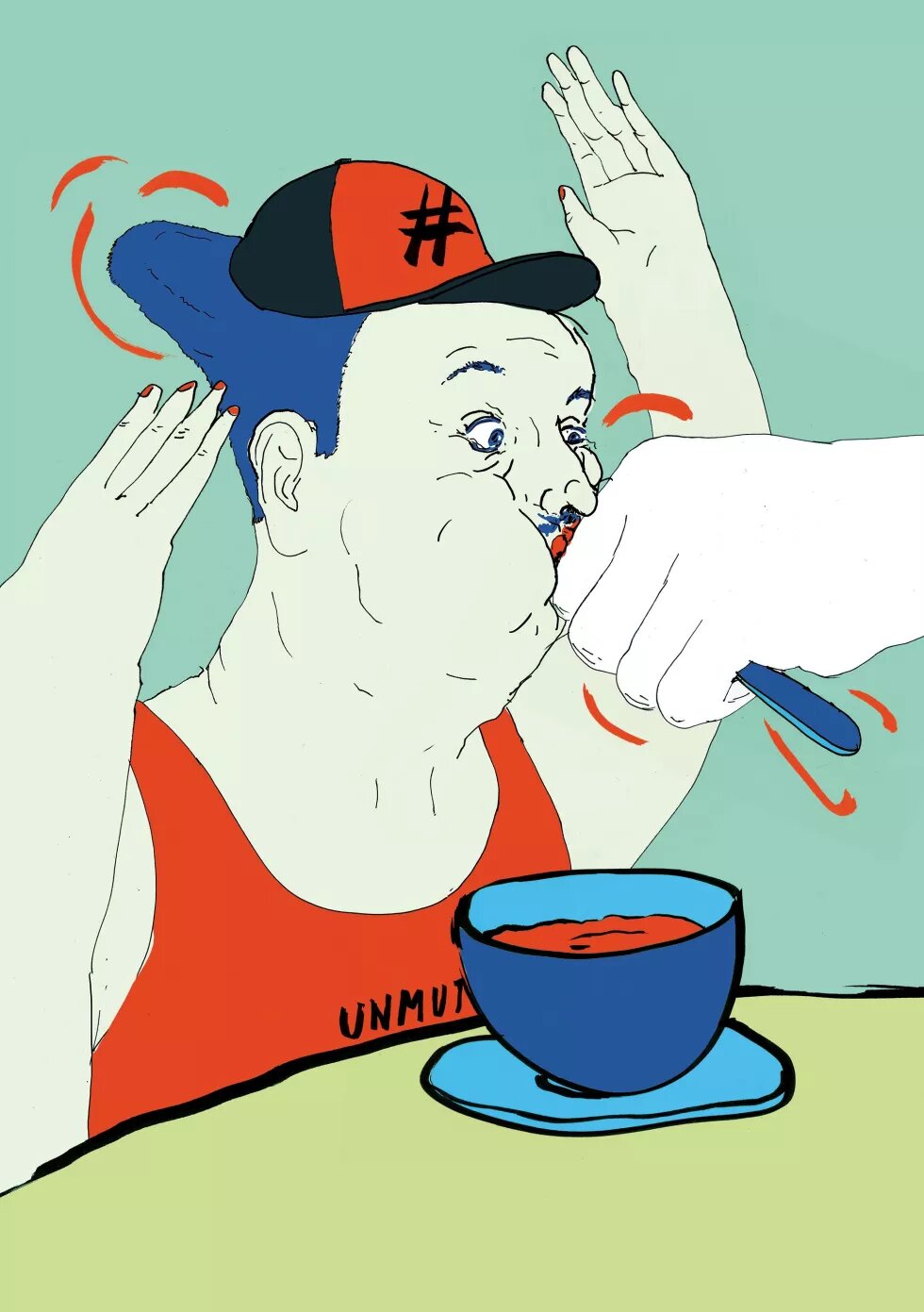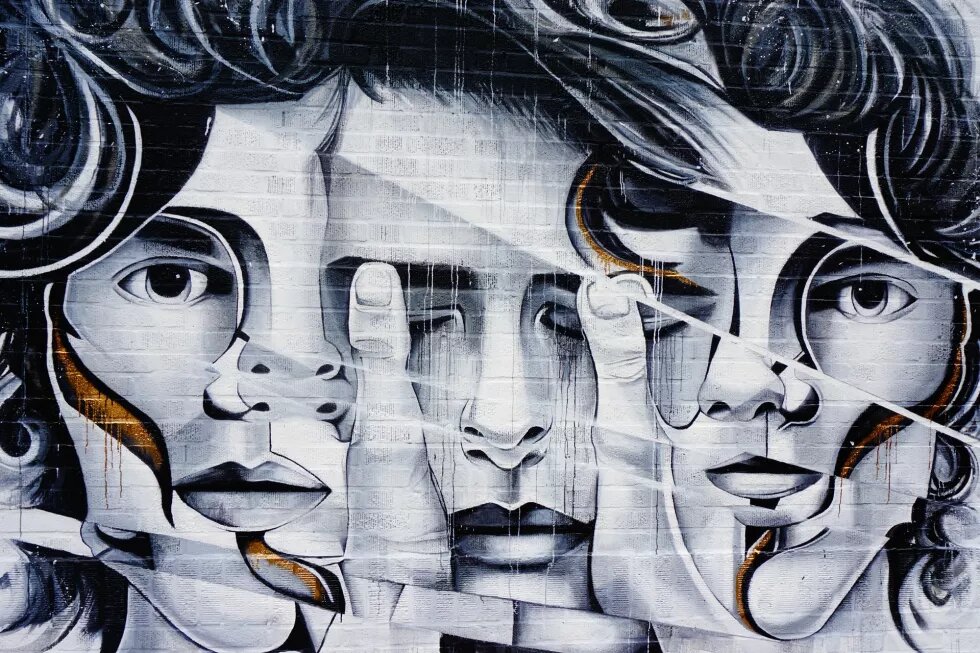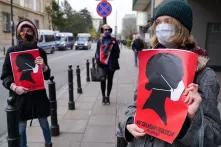
How do cultural institutions deal with internal cases of violence, abuse of power and multiple discrimination? In his contribution to the new publication "Theater and Power", Nishant Shah analyzes how art and cultural institutions refuse to dismantle their power structures and merely perform care work instead of practicing it. Here you can order and download the anthology for free.

In the summer of 2020, when we were experiencing the second wave of the COVID19 pandemic in The Netherlands, the world was suddenly taken ablaze by the Black Lives Matter protests in the USA that quickly spilled over into conversations around race, migration, longing, and belonging into this part of the world. It came as a surprise to many of the stronghold art universities who prided themselves on ‘tradition’ and ‘excellence’ that these categories have been used to exclude and erase histories of violence and persons marked by difference from our canons and classrooms.
It was a moment of reckoning for many art institutions and cultural organisations around the world. Even the most diverse and global schools which could easily point at a multiplicity of bodies in their staff and communities could not hold the scrutiny of polyvocality [1]. The ‘diversity work’, as Sara Ahmed (2012) had already warned us [2], was the work of performing institutional diversity without actually changing and challenging the structures and systems that make it necessary to institute diversity work.
During that time, I was approached by a number of student groups and independent art collectives to do talks, workshops, and brave space conversations [3] with groups of artists and researchers who were interested in the histories of such organising and invested in understanding how these changes get effected in institutional structures ranging from art universities, museum and gallery spaces, and film and performance festivals. Through my involvement in five such groups in the Netherlands, each very different in location and concern, I started observing a pattern that was both as devious in its strategies as it was disarming in its unfolding.
The extinction impulse of care
I have now come to call this the ‘extinction impulse of care’ [4]. Without naming any one institution in particular – as if scapegoating one will be the end of the problem – I am presenting to you, a structural problem in how we deal with cases and instances of violence, abuse of power, and discrimination on multiple axes within the institutional structures that continue to perform care without actually operationalising it.
The extinction impulse of care unfolds through a 4-step structure.
Articulation of the problem. The question of articulating the problem is perhaps the most visible when talking of gender based violence. When questions of gender based violence emerge, they have to be seen as symptomatic and a critique of the entire institutional culture which has naturalised and incentivised these practices. Instead, each case is always presented as an individual interpersonal struggle. However, every time problems arise, the institution presents itself as a mediator. It sets up investigations, it hopefully even offers social justice measures, censuring the perpetrators and supporting the survivors, and in the process abdicates its own complicity and extension of such practices. The problem that is a general institutional problem, immediately gets articulated as a problem between two people – the aggressor and the abused, and the institution focuses correction based on punishment of the single individual without necessarily addressing the larger cultures of abuse that have enabled this behaviour and indeed created codes of silence around it. The institution remains intact as the aggressor is made extinct.
Localising the problem. The conversations around race become problems of how do we deal with non-white people in the institution. The questions around trans-equality become questions about how to make special accommodations for those who identify as trans, and are vocal about their demand for spaces for being and working. It is a progression through logical fallacy where the universal problem gets defined as the problem of those who are the most adversely affected by it. In one of the conversations, it was starkly made clear that when trans persons in the institution were questioning the heteronormative gendering of restrooms and toilets, the question eventually got framed as how these transpersons have a problem in using restrooms and toilets and they have ‘special needs’ which need to be accommodated. Or in another instance, the complaints of non-Dutch students about the lack of adequate signage or even official paperwork in the language of their education instruction, was presented as a problem of people who do not understand/ refuse to learn Dutch, and how we can provide the bare minimum resources which can help them navigate but would never give them ownership of these spaces.
The allocation and investment of resources to address these problems and issues, is also nominated as special needs and cosmetic changes that are made to the existing structure and culture of the institution rather than addressing the implicit discrimination and the structural biases that lead to the creation of these problems in the first place. Additionally, it puts the burden of integration, rehabilitation, and ‘reaching out’ on to these communities who experience intimidation and silencing tactics through dismissal and ‘strategic unhearing’ of their narratives and problems. It is very rare that the solutions are sourced from those who voice the critique, reducing them to beneficiaries while keeping them out of the decision-making processes and practices. In this process, the problem is made extinct by ghettoising it and nominating it as a problem of a small minority, dissociating it from the larger structures that continue to shape it.
Re-centring the dominant voice. Activists have often shown how, even in the most egregious instances of racially motivated or gender and sexuality hate crimes, the narrative is often framed to take away agency from the victims and survivors while humanising those who represent the dominant and normative identities and demography. The recasting of the problem takes up very expected tropes. The proposal of uni-sex restrooms and toilets to facilitate the presence of trans persons, for example, immediately triggers a concern about cis-women who might experience discomfort or perceived threat because of the presence of other non-cis bodies in spaces of intimacy and vulnerability.
Demands for enforcing codes of conducts for respectful behaviour or training of staff and faculty to create sensitivity towards diversity and disadvantage in the work and learning environment deflected. ‘What about the <insert privilege markings list here> person who has been working here, and never done anybody any harm, who is now feeling threatened because you look at him with suspicion?’ is a question that is asked in many different ways to every form of dissent, drawing the attention to those who are inoffensive and representing the privileges, presenting them as victims of this social justice movement that calls out their implicit advantages and structural benefits. This mode rearticulates the problem and the proposed solutions as unfair to those who have historically benefited from the status quo, and the legacies and narratives of pain, exploitation, abuse, and threat are made extinct, often gaslighting the people asking for change, as engaging in acts of militant practices of counter-violence.
Due Process and conduct. Due process is the holy grail of institutional survival and selectively deployed to censure and silence protest. Social media posts and updates that pay testimony to experiences of pain are policed and the people put under surveillance. When voices narrate the stories in public because they no longer can find resonance in their institutional spaces, they are reprimanded and threatened for not following ‘due process’, even when shown that the due process does not work.
Black students voicing demands were asked not to be angry and maintain decorum. Women calling out their aggressors were censured for being abrasive in their testimonies. International staff and faculty members were reprimanded and sanctioned for voicing their dissatisfaction with the institution in outside networks, often threatening continuation of their contracts or support of their immigrant status. Dissent and its mode of articulation is seen as the real problem, and the push is to normalize or silence them into the due processes of the institution which has created these conditions of discrimination and abuse in the first place.
Framing of the problem as an individual relationship problem
The most disarming part of this 4-tiered extinction impulse is that it uses the language and performance of care-making in justifying its approaches, thus producing a weaponization of care through institutional practice. In the framing of the problem as an individual relationship problem, removing the institutional structure and systems from the equation is presented as a condition of care to ensure the focus on the persons who are suffering. The institution should be made invisible because this is not the time to focus on the context but on the individual case that has come into focus, and under the pretext of putting all attention and resources on the care of the individual, the institution abdicates its responsibilities in the making of the problem.
When converting the universal problem into a specific one, the framing of attention only on those who are disadvantaged, is done in the language of offering resources and reparations to the historically deprived and underserved. However, the focus of resources is a way of ‘reforming’ these care beneficiaries, without giving them agency and space in decision making, and keeping the comfort and peace of those in power, without ever pushing them into the discomfort of confronting the material realities of those who have suffered through the systems that they have benefited from.
The re-centring of the dominant canon and voice, muddies both the intentions and vectors of care-making. Instead of orienting care practices and resources to the most vulnerable, a ‘duty of care that serves everybody equally’ creates a false equivalence between those who are in real threat and need of support and those who are offended by somebody pointing out that they are complicit in or benefit from systems that threaten the well-being of those who are discriminated. In the guise of care as a universal value, where the broken and the healthy need equal treatment, it produces a thinning of resources and a passive guilting of those who demand care because of the conditions of abuse and violence that they find themselves in.
In the invoking of the bureaucratic processes of behaviour policing and disciplining, an imagined care-responsibility and duty is hosted upon the shoulders of the dissident voices, demanding that they demonstrate their loyalty to the institution and their commitment of care to the organisation and its people, even if it means diminishing and silencing their experience of discrimination and exclusion at the hands of these people.
This is how, despite the overwhelming deployment of care work, care language, and care performativity, our institutions continue to perpetuate conditions of exclusion, abuse, and violence, weaponizing care to sustain the status quo and make the voices of dissent extinct. A pattern recognition of these tropes remind me of the wry dark statement often echoed in cynical circles, ‘the best way to remove poverty is to eradicate poor people’. Our institutions seem to have perfected this idea all the while couching it in the language of making care.
Three lessons learnt
This unwrapping of institutional politics and administrative culture can often feel like we are stuck in a condition of deadlock. It does echo the larger socio-political despair that we experience in the continuous struggle for future justice. However, I do not buy into the politics of despair, and vicious as these problems are, we cannot be paralysed by them. It is not in the scope of this short essay to give recipes of cure, but there are three lessons that I have learned, and continue to learn more that have helped in taking the first steps, that I would like to share with you.
1. Care is a verb. Linguistically and in practice, it is good to emphasise that care makes itself manifest only in action. It is a process, a way of doing things, and needs to be the filter of identifying and measuring care practice. Intentions of care, gestures of care, and performances of care are necessary and play their part, but the manifestation of care is only in practice, and we need to hold our institutions towards this kind of ‘care-work’.
2. Care needs to be decentralised. The most common problem in the structural extinction problem is that the institution which has been responsible for creating the lived problem is also given the responsibility of solving it. The responsibility of fairness, ironically, is put upon the oppressor. The institution cannot be made responsible for the change process. It is the object undergoing change process. Decentralisation of care needs a formulation of people who are given the authority and the remit of holding the institution accountable and recalibrating it without the fear of offending those who feel their power sliding in this process.
3. Weaponisation of care is so insidious because it immediately takes attention into the future. Weapnisation of care is about presenting care as an aspirational and futuristic ambition. It justifies the historical imbalances and the inequities of the present towards a long drawn future plan, thus taking away the urgency of care for those who are suffering from the extinction impulse here and now. Thus, every future plan requires a historical base-line: A base line of discomfort that forces us to acknowledge the current compositions, imbalances, and naturalized violences that our institutions continue to hold on to, putting change as a future commodity rather than an urgent present action.
None of this is easy. All of this is fallible. The most ambitious leaders will continue to struggle at actually operationalising these. These are principles that do not lend themselves with fluency to the modes of administration and forms of governance that our arts and cultural organisations have taken for granted. However, recognising these as utopian ideals on which we will fail, gives us the freedom and the agency to do more, do better, and recognise that when we have to choose between care of the institution and care of people, people will always have to come first.
This essay is taken from the volume Theater and Power – Observations on Transition (Theater und Macht – Beobachtungen am Übergang).
Published by the Heinrich-Böll-Stiftung and nachtkritik.de in collaboration with Weltuebergang.net under the editorial direction of Sophie Diesselhorst, Christiane Hütter, Elena Philipp und Christian Römer. Berlin 2021.
The volume can be ordered and downloaded as pdf here (in German)
1 Polyvocality is an approach in ethnography and anthropology which talks about the need to focus on power and diverse ways of knowing in order to create a constantly shifting narrative practice that refuses easy resolutions and answers. Isabel Crabtree-Condor (2020) describes it poignantly as a way of questioning ‘social, public, or dominant narratives that help to legitimize existing power relationships, propping them up or making them seem natural’.
2 Sara Ahmed, in her scathing structural critique of academic institutions warns us that ‘diversity work’ in universities is ‘image work’, and needs to be questioned beyond the people employed to perform this work so that the institution doesn’t have to change. Ahmed, Sara (2012). On Being Included: Racism and Diversity in Institutional Life. Durham: Duke University Press.
3 Diana Ali (2017) provides a powerful argument against the ‘safe spaces’ which are often presented as shying away from uncomfortable conversations or presence in the name of care. She instead proposes ‘brave spaces’ as safe spaces that allow for dissent and discord but find safe and protective conditions to resolve these differences. Ali, Diana (2017). “Safe Spaces and Brave Spaces: Historical Context and Recommendations for Student Affairs Professionals”, NASPA Policy and Practice Series.
4 Care is fashionably trending right now. However, I draw from my own feminist practice and learning, and my academic work to give a very straight forward understanding of care. Care, for me, is about investing the resources that are important for our own sustenance and investing them into the well-being of those who need it, without any transactional expectation. Care-work, then, is not just about the financial and political industries of care-making but about the unaccounted labour and invisible depletion of resources that go into creating care conditions for those who are underserved or threatened.


